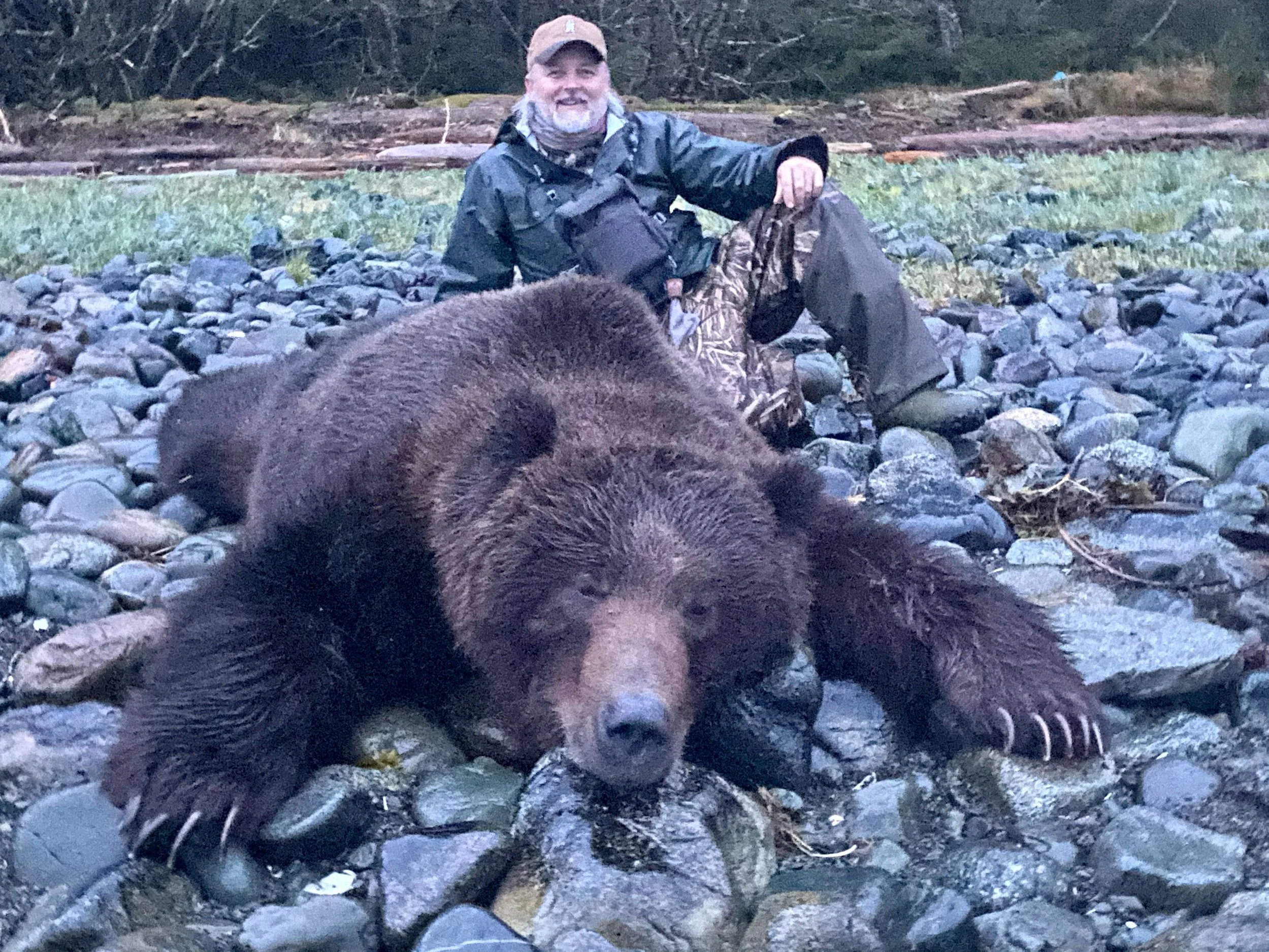Guided Brown Bear Hunts
A brown bear hunt with Alaska Raven Guides is the ultimate challenge for hunters looking for a true fair chase bear hunt in Southeast Alaska’s Tongass National Forest. Our two hunter, 10 day brown bear hunt, provides all you need for success; including one on one guiding. This, ensures the best chances for success for each hunter.
Our boat, the Isla Dawn, provides comfortable accommodations and transport to our guide areas around Sitka - this includes greater Baranof Island and Chichagof Island - areas which are now known to have some of the largest concentrations of brown bear populations in the world. Once in our desired area, we will use smaller skiffs to locate bears and transfer guides and hunters to shore for the stalk.
Take note, this is not a grizzly hunt. This is a coastal brown bear hunt - regarded as the ultimate in Alaskan bear hunting, both for the challenge and the reward of harvesting such a trophy. These bears live within 50 miles of the ocean and their diets are heavily supplemented with wild salmon, making them much larger than their inland grizzly cousins.
A Normal Day of Hunting
A typical day of bear hunting in Southeast Alaska starts more relaxed than many other hunts. Usually the hunt will not begin until the afternoon when things have warmed up a bit and bears are more active. Typically, a leisurely breakfast aboard the boat is followed by a few hours of glassing aboard the Isla Dawn. We’ll be looking for a suitable bear, but you’ll also see all manner of wildlife including brown bears, humpback whales, orcas, Dall’s porpoise, Sitka blacktail deer, sea otters, harbor seals, bald eagles, and more. The scenery in Southeast Alaska ranges from snowcapped mountains to sandy shorelines to rocky cliff outcroppings. During downtime, when not hunting, we’ll often pull up a pot of Dungeness crab for lunch or dinner.
Spring Hunts
Brown bears emerging from their winter hibernation, show their thick, beautiful hides as they search for their first meals in months. They look for sedge grass along the edge of the water. Sedge grass stalks are spiky, wide, and stiff, but the sedge grass contains up to 25% protein this time of the year. Consuming large quantities of fresh sedge grass helps replenish the lack of proteins during hibernation and restart the digestive system.
During the spring, hunters and guides will use skiffs to locate bears and do an initial evaluation on size, quality, and whether a stalk is possible based on current conditions and location. Once a potential bear is located the real excitement begins as the guide works with the hunter to get ashore to stalk close enough to get a better view and make a final decision on whether to harvest the bear.
Because bears are more wary after emerging from their den in the spring, bow hunting can be slightly more challenging. While it is not impossible to take a brown bear by bow in the spring, it is much more difficult than in the fall, when bears tend to congregate around salmon streams and are focused on putting on as much fat as possible to help them survive hibernation.
Fall Hunts
Fall brings streams full of spawning salmon to Southeast Alaska. During this time bears are busy packing in calories before their long winter hibernation. The rivers are full of high fat, high calorie, and protein dense salmon, and these fish provide the final significant feast before winter sets in and the bears den up until spring. The bears are hyper-focused on feeding and it is not unusual to see large numbers of bears feeding in a relatively small area.
During the fall hunt, our focus shifts to the stream bound bears as they gorge themselves on salmon. Hunters and guides will still use skiffs to go from the boat to shore, but then they hike upstream to find a good location to observe bears as they come and go. The fall provides a better opportunity for bow hunters since the bear’s focus on feeding allows us to get really close. How close? Close enough to see the bear’s breath! Fall hunts are our favorite due to the amount of animal activity.
Recommended Gear & NOTES
Clothing For The Hunt
Merino base layers
Comfortable pants
Chest waders
Mid layers (i.e. sweatshirts, fleece, down coat, wool)
Windproof outer layer (Kuiu, Sitka, First Lite)
Rain gear (Grundens, Helly Hansen, Guy Cotten)
Rain boots (Xtra-Tufs)
Other items
Pajamas/lounge wear
Comfortable shoes/slippers
Personal toiletries
Medications
Favorite Snacks
NOTES
Call us for current pricing and availability for our 10 day Brown Bear Hunt.
Our hunts include all accommodations, food and non-alcoholic beverages from the day your hunt begins to the day it ends. Other fees include: tag, license, city sales tax, city lodging tax, and HPF fee. Any taxidermy fees and associated shipping fees shall be borne by the hunter.
Non-hunting guests/observers are $4,500
(1 observer per hunter permitted)
Please Note: Prices on booked hunts (signed contract) are locked in. Non-booked prices are subject to change without notice.




